Bohol use coal-fired power triggers high rates despite it’s anti-coal plant
By Ric Obedencio | 10:18 AM February 23, 2023

The province of Bohol thru its distribution utilities (DUs) are procuring and consuming power generated from the coal-fired despite the fact that it is against the putting up of coal plant here.
Bohol Light Company, Inc. (BLCI) is sourcing its six megawatts power supply from coal generated plants of KSPC. Bohol Electric Cooperative I and II are using coal produced by SMEC and GN Power, respectively, according to the public utilities report by Provincial Board Member Aldner Damalerio.
“This is the main reason why the electricity in Bohol is costly because all (except Green Core) power suppliers of our DUs are using coal as their energy source,” Damalerio said.
Earlier, the Sangguiang Panlalawigan passed Provincial Ordinance opposing the setting up of a coal plant to augment the power insufficiency here but it did not comment on the use of gasoline and other petroleum products. Both coal and petroleum are said to be products from fossils.
Bohol, however, is not alone in using coal energy but most of the country. “For September 2022 alone, the generation mix of Boheco I is 87.57 coming from coal-generated power plants.”
The committee report signed by Damalerio as chair and BM Dr. Romulo Cepedoza and BM Atty. Tomas D. Abapo, Jr, vice-chair and member, respectively, dealt with Abapo’s concern over the rising cost of power in Bohol.
Damalerio compared the power rates on the following: Southern Leyte @ P19.01/kwh in July 2022; Zambales, P20.48/kwh in August 2022; Biliran, P20.96 in September, 2022; Southern Leyte, P19.76/kwh in October; CBECO in Cebu, P19.81/kwh in November 2022; and VECO, P18.54/kwh in December 2022.
Damalerio said that the so-called “generation charge” got the lion share in electric billings.
Damalerio cited that Boheco I’s generation charge is 67% during December 2022 as an example of big chunk in power bills. While transmission charge is only 3%; distribution (supply metering charge (DSM), 10%; and reinvestment fund for sustainable capital (RFSC) expenditure, 5%.
“Both DSM and RFSC are charges paid to the DUs as regulated and approved by the ERC and National Electrification Administration.”
The charges imposed on the consumers are mainly based on the Electric Power Industry Reform Act of 2001 (EPIRA), or the Republic Act No. 9136. This made the four sectors — generation, transmission, distribution and supply — of the industry privatized.
“Generation charge is defined as “pass through” cost. This is the cost from generation companies/power suppliers. This is collected by the DUs and remitted to the power suppliers.”
Also, the cause of high cost of electricity is the ongoing war in Ukraine illegally invaded by Russia said to be the leading supplier in Europe. Countries, like Indonesia, which took a stand in reserving its coal for their use, “scrambled in purchasing coal.” This paved the way to coal supply shortage, the report said.
Cost of transportation for raw coal supply from other countries added to the generation cost, the report said. (rvo)

Share this:
Related posts.

Grass fire hits Chocolate Hills in Carmen
- Bohol Island News
- April 30, 2024
A grass fire that lasted for hours due to the extreme heat affected the Chocolate Hills in Carmen town on Tuesday night, April 30, 2024.
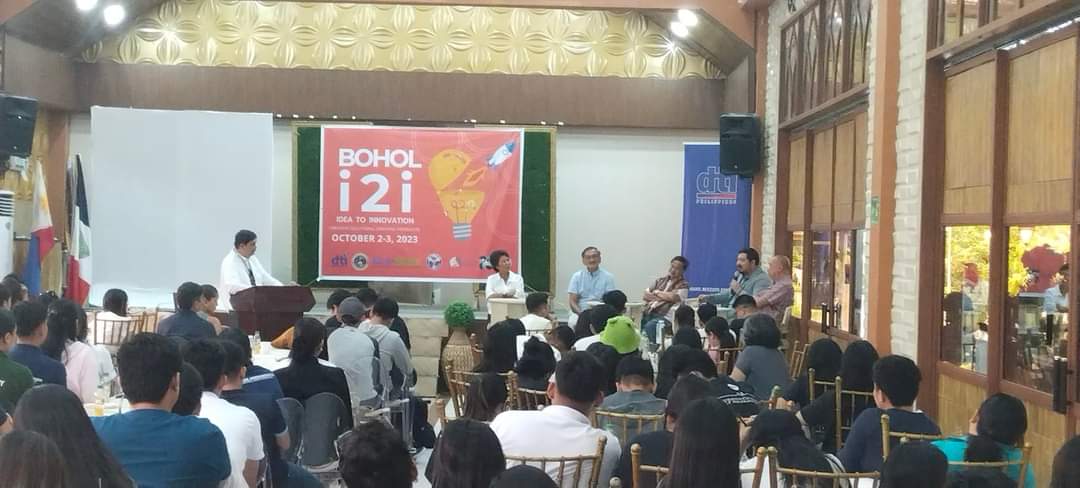
- Science and Technology
Young Boholano innovators convene in Bohol i2i
- October 3, 2023
Boholano students recently convened for the highly anticipated 2023 Bohol Idea to Innovation (i2i) Challenge where they presented their innovative product development concepts and marketing.
Cargo vessel runs aground in Cabilao Island no longer owned by Trans-Asia
- February 5, 2021
By J. Jala | 12:56 PM February 05, 2021 The Trans-Asia Shipping Lines Incorporated on Friday said that the cargo vessel which ran aground in […]
Leave a Reply Cancel reply
Discover more from bohol island news.
Subscribe now to keep reading and get access to the full archive.
Type your email…
Continue reading
- Subscribe Now
Bohol gubernatorial race: Arthur Yap against coal power plants
Already have Rappler+? Sign in to listen to groundbreaking journalism.
This is AI generated summarization, which may have errors. For context, always refer to the full article.

BOHOL, Philippines – Congressman Arthur Yap, who is running for governor of Bohol, recently said he is against using coal to meet the power needs of his province.
“The main attraction is our beaches and our forest,” Yap said, emphasizing that environmental protections should be considered while addressing the island’s power concerns.
He spoke during a candidates’ forum on Tuesday, April 23, organized by the Bohol Chamber of Commerce and Industry (BCCI) at the University of Bohol’s gymnasium in Tagbilaran City.
The provincial government of Bohol passed an ordinance in 2018 against the establishment of coal power plants. (READ: Bohol’s no-coal ordinance ‘an important victory’ – advocate )
Provincial Ordinance 2018-005 was signed last April 6 after the public campaigned against coal companies that were vying for a slot in bidding for power projects in the province.
Yap, who was agriculture secretary during the presidency of Gloria Arroyo, said Bohol should add another provider to the power market in addition to Boheco and Bohol Light, “but definitely no coal .”
He also said that the province should look at renewable energy like solar and wind power to fill the demand gap even further.
Bohol has been gripped by power issues for the past several years, but a number of projects are already in the works to address the shortage.
According to a report in SunStar Cebu , the Central Visayas’ Regional Development Council said in December 2018 that the power situation is expected to stabilize by 2021 as the Cebu-Bohol interconnection project nears completion.
This project is expected to add 400 megawatts (MW) to the island’s current 90 MW.
The One Bohol Power project is also scheduled for completion in 2023.
Yap said he is against mineral mining only, but not necessarily against extractive mining, such as quarrying.
Yap, who is serving his 3rd and final term as the representative of the 3rd District of Bohol, is running under PDP-Laban against former Cabinet secretary Leoncio “Jun” Evasco Jr.
Hugpong ng Pagbabago, the coalition of presidential daughter Sara Duterte, is supporting Evasco’s candidacy. President Rodrigo Duterte also said in November that he was supporting Evasco. (READ: Duterte: Jun Evasco is my candidate for Bohol governor )
Evasco did not show up at the forum, citing disagreements with the format which gave candidates only 3 minutes to answer present questions from the business community, according to a BCCI official.
Bohol is among the country’s top 20 vote-rich provinces with 898,000 registered voters for 2019.
Duterte won in Bohol in the 2016 elections with around 300,000 votes against ex-interior secretary Mar Roxas’ 196,000 votes.
While Roxas lost here in that election, his running mate Leni Robredo won with 266,000 votes against Alan Peter Cayetano’s 163,000.
Duterte’s bet Evasco was the mayor of Maribojoc town here before becoming the President’s campaign manager in 2016 elections, and later on, Cabinet secretary. – Rappler.com
Add a comment
Please abide by Rappler's commenting guidelines .
There are no comments yet. Add your comment to start the conversation.
How does this make you feel?
Related Topics

Ryan Macasero
Recommended stories, {{ item.sitename }}, {{ item.title }}.
Checking your Rappler+ subscription...
Upgrade to Rappler+ for exclusive content and unlimited access.
Why is it important to subscribe? Learn more
You are subscribed to Rappler+
- Voice of the Filipino overseas

Fil-Am student at SF State explains why she joined pro-Palestinian protest
Gov’t to seize 320 properties worth billions from chinese drug lords, a second look at the cases presented at the international peoples tribunal on the philippines, is the ‘artista’ bloc behind zubiri’s ouster due to injury dispute, house to summon ex- duterte adviser on p3 billion drug bust, groups file complaint against manila bay reclamation, dredging projects, angel locsin’s red-tagged sis rebukes parlade: i support women’s rights, but i ain’t with npa, health measures set for roxas night market re-opening on september 12, new philhealth chief may put people’s lives in peril – community doc, ang ‘enemy from within’ sa west philippine sea, the enemy is among us, [opinion] why we need to remember sc verdict on marcoses’ ill-gotten wealth , awra briguela’s violent arrest shows us how much the pnp hates transwomen, opinion: ph’s “improved” human rights situation, let’s talk about the banksy controversy in manila, behind the ai boom, an army of overseas workers in ‘digital sweatshops’, for many abused migrant domestic workers, the only way out is to flee, john pilger silencing the lambs:: how propaganda works, the convoluted histories of mechado, afritada, menudo, and kaldereta, nora aunor: national artist, film community celebrates 3 ‘historic’ new national artists for film, wear courage: linya-linya releases second collaboration with lualhati bautista, maelstrom over the killing fields: interventions in the project of national-democratic liberation. quezon city, philippines: pantas publishing, 2021., anatomy of philippines’ first olympic gold medal, carlos yulo wins vault gold medal at world championships, inspiring olympic heroes: runner loses the race on purpose in stunning act of sportsmanship, hidilyn diaz wins weightlifting gold in tokyo olympics, bbc’s ‘burning sun’ documentary exposes seungri, other k-pop idols in scandal, two films about ofws win big at cannes film festival 2022, star power no more the impact of celebrity endorsements amid disinformation in 2022 polls, neil arce reiterates angel locsin not running in 2022 elections: ‘she’s watching tv while the corrupt file cocs’.

No to Coal in Bohol
Latest news.

Related news
Leave a reply cancel reply.
Save my name, email, and website in this browser for the next time I comment.
This site uses Akismet to reduce spam. Learn how your comment data is processed .
Araw ng Huwad na Kalayaan
A glimpse of the marcos-duterte house of horror in the philippines, envi groups, fisherfolk and urban poor communities call for moratorium on reclamation projects in the country, maya daniel poetry recital: “our songs will never die down the valley”.


The Bohol Chronicle
Reporting the truth since 1954

Local firm ‘determined’ to build renewable hybrid power plant in Bohol
- Policy & Dev't
NOTE: THIS STORY WAS FIRST PUBLISHED IN THE BOHOL CHRONICLE’S SUNDAY PRINT EDITION.
Bohol Hybrid Energy Corporation (BHEC), declared its determination to build Bohol’s first renewable energy plant – a 50 megawatt (MW) solar power plant located in the province.
BHEC president, Atty. Wilfredo Bacareza, a Boholano who served as chief executive officer (CEO)of a Philippine National Oil Company subsidiary and also a former vice president of Aboitiz Power released a statement to the Chronicle on Wednesday that “BHEC is determined to pursue their renewable energy plant in Bohol due to the pressing and immediate need for energy security and renewable energy in Bohol.
BHEC recently pre-qualified and submitted its technical and financial proposal to the Third Party Bids and Awards Committee (TPBAC) of 1BP on February 12, 2021, together with five other bidders for the construction of an “in-island baseload power plant” to supply the ten-year 83 MWs committed baseload demand for 1BP starting in 2024.
A combination solar and diesel plant type was offered to the Third Party Bids and Awards Committee (TPBAC) of 1BP by BHEC with an effective levelized price of P5.1897.
ThermaVisayas, Inc. (TVI), a subsidiary of Aboitiz Power which submitted the lowest bid proposal per kilowatt-hour (kwh) at P3.0405 for the construction of a combination solar and coal-fired baseload power plant in Bohol withdrew its bid on February 23, 2021.
Declared by the TPBAC as the lowest calculated bid, the TVI proposal was in the middle of a rigorous evaluation when its withdrawal was sent to 1BP, TPBAC, and the JTWG.
Following the TPBAC bidding process and TVI’s withdrawal, the tender of Solar Philippines Power Project Holdings, Inc. (SPPPHI), will be evaluated as the second-lowest calculated bid of PhP3.9297/kwh for a solar+diesel plant.
STAND ALONE POWER PLANT
Bacareza expressed his deep concern over the lack of a dedicated power plant in Bohol which he believes “has hampered development and investments in the island.”
Bacareza disclosed that “having its own power infrastructure not only benefits the energy security and reliability of Bohol but the project will be used as a base to export clean renewable energy to the rest of the Philippines.”
According to Bacareza that “for many years Boholanos have suffered from a lack of energy security due to its lack of an in island plant” as shown by the devastating 7.2 magnitude October 15, 2013 earthquake followed by a month-long province-wide black-out on November 8, 2013, caused by super-typhoon Yolanda that laid waste the province of Leyte and a 6.5 magnitude earthquake on July 6, 2017, that crippled our main source of energy in central Leyte.
Bacareza also lauded the decision of the Provincial Government of Bohol not to accept coal plants “because the future of power lies in renewable energy and Bohol has valuable renewable energy resources that remain untapped.”
A no-coal ordinance was passed by the Provincial Government of Bohol on April 6, 2018, under Provincial Ordinance No. 2018-005 banning the establishment of coal-fired power plants in the province.
A tourism stakeholder, Barcareza who owns Ocean Suites Boutique Hotel in Tagbilaran City and Ocean Blue Lounge in Moadto Strip, Barangay Duljo, Panglao cited the benefits of the Green Energy Option Program (GEOP) of the Department of Energy (DOE) as a source of clean and affordable power instead of relying on power suppliers outside Bohol.
The GEOP entitles end-users to choose renewable energy in meeting their energy requirements.
Bacareza is currently the president of a number of power firms such as Global Clean Hybrid Energy Corporation and Island Hybrid Power Corporation. (Chito M. Visarra)
DFA Consular Office to open in Tagbilaran

Aris creates ‘Task Force Alona’ amid tourist influx
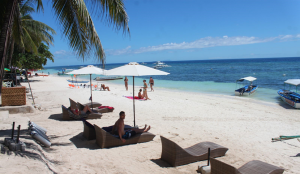
Tagbilaran coliseum construction in full swing
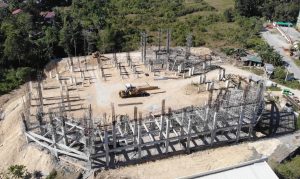
DOLE-Central Visayas beefs up livelihood aid to eliminate child labor

Tagbilaran Council seeks to intervene in calls for cheaper Manila-Bohol flights

200 Boholanos get P2.7-million livelihood aid
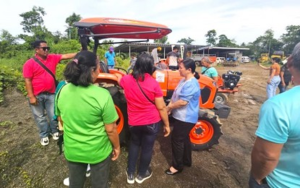
Be First to Comment
Leave a reply cancel reply.
You must be logged in to post a comment.

The Bohol Times
Bohol bans coal power plant; allows diesel fueled plant for backup power supply

WHILE strongly opposed to the use of coal mineral to generate electricity, the province of Bohol is considering using diesel, which is also derived from fossil, apparently to fuel the planned island-based power plant in Imelda, Ubay town, as back-up source in times of calamities.
One Bohol Power spokesman and 1BP Technical Working Group member Engr. Algerico Siga was quoted that Energy Development Corporation (EDC) is to build a power plant in Imelda, Ubay town, to be fueled by diesel once the power supply agreement (PSA) is approved by the Energy Regulatory Commission (ERC).
“Matod pa ni Engr. Siga, kung ma-aprobahan na ang PSA, pwede na makasugod dayon ang EDC sa construction sa diesel power plant sa Imelda, Ubay.” (Engr. Siga said that if the PSA is okayed, EDC may come in to construct diesel power plant in said place), according to the facebook post of Gov Art. Yap.
It said that EDC was awarded on October 25, 2021 for aforesaid power project during the meeting of the so-called Bohol Energy Development Advisory Group (BEDAG) last week led by the governor. The target date for project completion would be on December 26, 2023.
The governor’s post continues that “the use of diesel power plant assured that it will not result to high power rates of electricity in the province once this (diesel power plant) operates”.
This is because what was offered (price of kilowatthour) during the bidding under contract is the charge for power used “regardless of what power source supply use by EDC.”
“Dugang gipasabot usab ni Engr. Siga nga ang option sa paggamit sa diesel power plant dili moresulta sa pagtaas sa power rate sama sa usual nga experience tungod kay kon unsa ang presyo per kilowatt per hour nga gi offer panahon sa bidding ug kung unsa ang gipirmahan sa kontrata, mao na ang presyo nga pagagamiton regardless kon unsa ang gamiton nga power source supply sa EDC. Nidugang si Engr. Siga sa pag ingon nga ang maong proyekto suma sa gikaigo-an sa gipirmahang kontrata, pagahumanon sa Dec. 26, 2023.”The governor said that those who attended the said meeting are: representatives of the DOE, Engr. Kelvin Ed D. Dajao; General Managers of the DUs, Engr. Dino Nicolas T. Roxas of BOHECO 1 & Chair of 1BP; Engr. Eugene Tan of BOHECO 2; Engr. Paulino Almedilla of Bohol Light Company Inc.; Forester Ariel N. Rica – PENRO Bohol; Atty. Lucas Nunag of Provl. Tourism Council; Engr Albert Uy of Bohol Chamber of Commerce & Industry; Mr. Aurelio Salgados, Jr of BANGON; Mr. Ribomapic D. Nacorda of Bohol Island State University; Atty John Titus Vistal of the Provincial Planning and Devt. Office; Atty. Abeleon Damalerio, representative of Cong. Edgar M. Chatto; and 1BP Technical Working Group members Engr. Danilo Quidlat, Engr. Algerico Siga, Engr. Joson Castro and Engr. Ariel Torrejos.
The need for the island-based power plant is pushed following the suffering of the entire island-province had experienced when disasters struck the province. It endured months of without power after the earthquake on October 15, 2013 and the devastation caused by super typhoon Odette on December 16, 2021.
Bohol is largely dependent on the Bohol-Leyte Power Interconnection from the geothermal plant of Leyte province that could supply some 100 megawatts via undersea cable.
Bohol now needs some 80-90 MW to power its electricity requirement in peak hours, according to distribution utilities (DUs).
It has three hydro electric plants located in Loboct town (1.2MW), Sevilla town (2-3MW) and the Hanopol, Balilihan town (4-5MW). It also relies much on the standby diesel power barge (25MW) moored in Tapal port, Ubay town and the vintage Bohol Diesel Power Plant (BDPP) (16MW) in barangay Dampas, Tagbiaran City.
But, according to Siga in earlier interview days after the Odette, it may take three years for these hydro plants to operate after being adversely affected by Odette.
COSTLY DIESEL
After typhoon Odette’s devastation, the diesel power barge and the diesel plant in the city operated to provide the electricity need of the province while the temporary and permanent solid structures for Leyte-geothermal power link from island town of President Carlos P. Garcia were to be erected in Ubay town.
The power rates have gone up for the use of diesel as fuel of the power barge and the BDPP.
The DUs announced this (increase of power rates) prior to the operation of the two diesel powered plants.
It will be recalled that the Sangguniang Panlalawigan passed Provincial Ordinance No. 2018-005, “declaring the official stand of the provincial government of Bohol disallowing the building or establishment of any coal power plant in the province of Bohol.”
Section 1 states that the establishment of coal powered electric plant is “contrary to its avowed vision, mission and goals.”
Section 2 of the said Ordinance provides for the conduct of information and education campaign “to let the Boholano people clearly understand that should there be increase in the cost of power after the competitive selection process, this is not solely due to generation cost, but also due to the need to pay for a clean and safe environment.”
FOSSIL FUEL
According to the United States Energy Information Administration (USEIA), “Diesel fuel is the common term for the distillate fuel oil sold for use in motor vehicles that uses the compression ignition engine named for its inventor, German engineer Rudolf Diesel. He patented his original design in 1892. Diesel fuel is refined from crude oil and from biomass materials.”
It added that diesel contains “sulfur that produces air pollution emissions that are harmful to human health.”
Coal, on the other hand, is black sedimentary rock composed of carbon and hydrocarbon which contain energy than can be released by combustion, according to the National Geographic.
“Fossil fuels are formed from the remains of ancient organisms. Because coal takes millions of years to develop and there is a limited amount of it, it is a nonrenewable resource.” (rvo)
Related Posts

P420-M+ loss to El Nino stirs Bohol’s declaration: CALAMITY

Tagbilaran observes International AIDS Candlelight Memorial Day

Pagtaas sa presyo sa pagkaon, ang nakaangin sa 4.3% inflation

Poor communities in Bohol most vulnerable to natural hazards
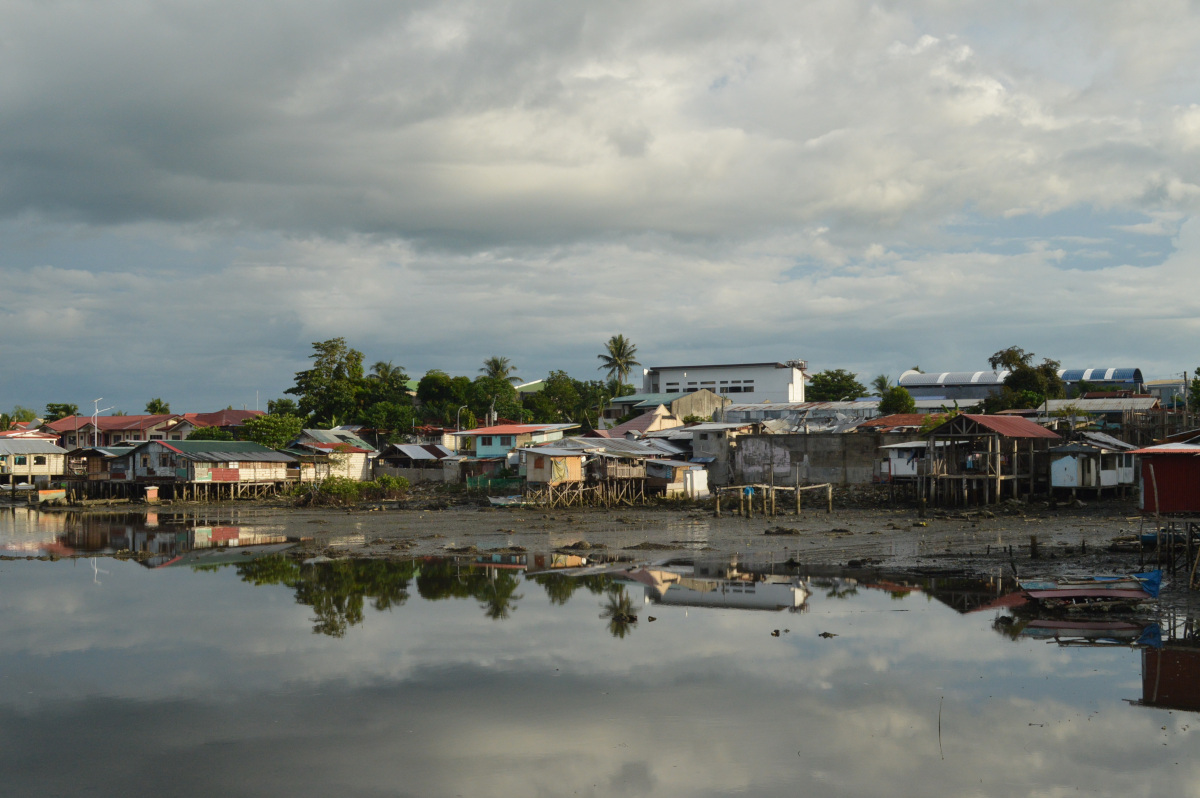
TAGBILARAN CITY — It is a common sight after a powerful typhoon or earthquake hits the country: poor communities are evacuated to temporary shelters to protect them from further danger.
Authorities say they should not have been there in the first place but are forced to live in dangerous areas largely due to poverty. In Bohol, like many parts of the Philippines, the poor are forced to live in dangerous locations, like next to riverbanks, or along the coast or on steep slopes, says one report.
“This is mainly due to rapid urbanization, which led to a large number of unplanned and overcrowded settlements. People live in mountainous areas and near the shoreline due to their livelihoods,” according to a 2017 study of rehabilitation after the earthquake in Maribojoc in 2013.
Moreover, due to poverty, many of Boholanos do not own land, Dutch author Laura van Vieshout said in the report entitled ‘Empowering People, Caring for Environment,’ which was produced under an internship arrangement between a European organization and PROCESS Bohol, that works to strengthen people’s organizations.
“Problems occurred during the time of rehabilitation since one of the requirements of receiving funds for building back the houses, was that the people had to own the lot. Therefore, many people are still not rehabilitated after the earthquake,” the report said.
And so the cycle continues.
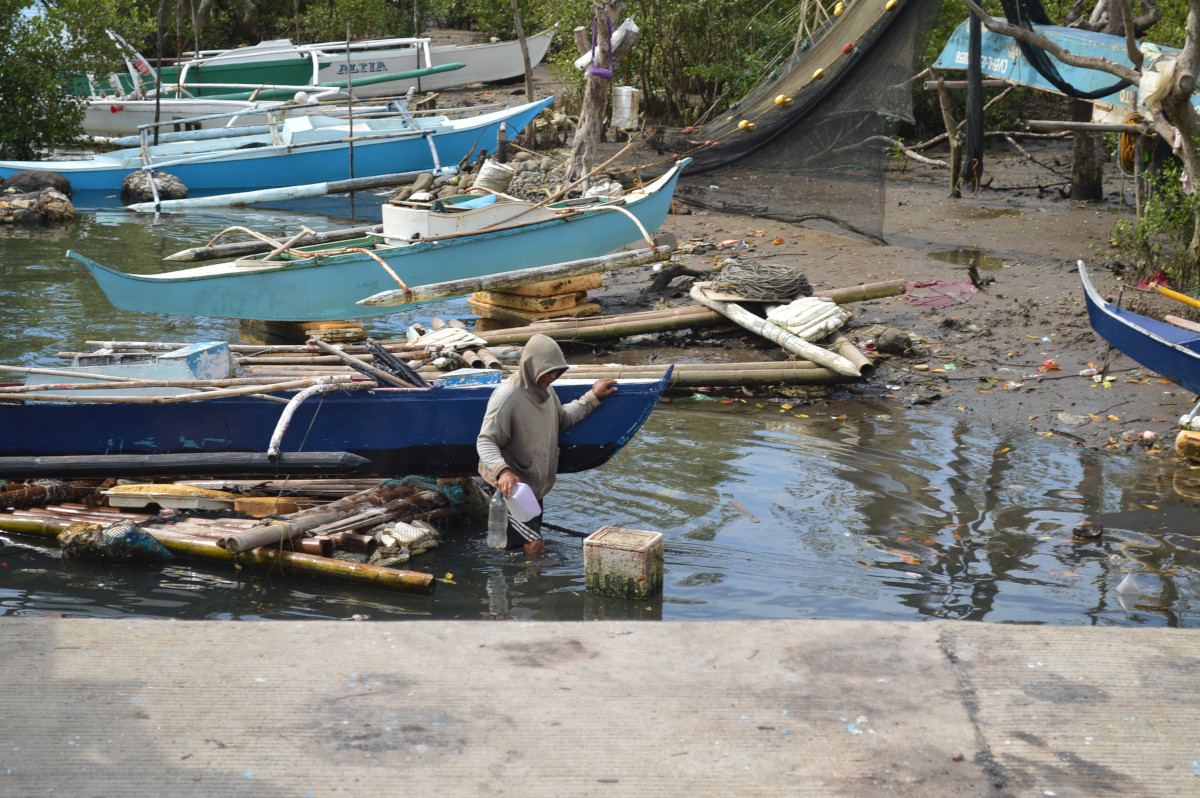
“The informal settlers (or internally displaced persons) have been prohibited to go back to the danger zones, but the DPWH cannot stop people from doing so since their source of livelihood — fishing and selling in the market — is there,” explained Olivia F. Lopos, Supply Officer III and designated information officer of the Department of Public Works and Highways in Ubay.
Feliciano Bernalez, OIC Disaster Risk Reduction Management of Ubay, reaffirmed this. “They’re not supposed to be allowed there, but they still return even if they know they are in danger zones based on (their) experience of the last typhoon. They hesitate to leave since that is where their livelihood is. What will they do in the mountain? They find it hard to leave the coastal area,” he said in an interview.
“Hopefully steps will be taken legally that people in danger zones are transferred to safe places,” he added.
Again on the presence of informal settlers in the landfall site, Engr. Martin Pelarada of the DPWH, said those facing the sea are in danger, but those on the other side of the embankment are protected because seawater can no longer get inside since there is a barrier. “If there is a storm, however, the informal settlers will have to leave that place.”
Exposure to hazards does not automatically make a community vulnerable to disaster, but if the community is poor and with less capacity to manage itself, then it will always be “victimized” by natural or manmade hazards, according to Oscar Lizardo, former chief information officer of Project NOAH, the Philippines’ primary risk reduction and management program.
“If an area is exposed to hazards, not all [people there] are vulnerable, but the poor are,” he said in a lecture in Bohol several years ago. Vulnerability, he added, could also be due to “various physical, social, economic and environmental factors, such as poor design and construction of buildings, inadequate protection of assets, lack of public information and awareness, limited official recognition of risks and preparedness measures, and disregard for wise environmental management.”
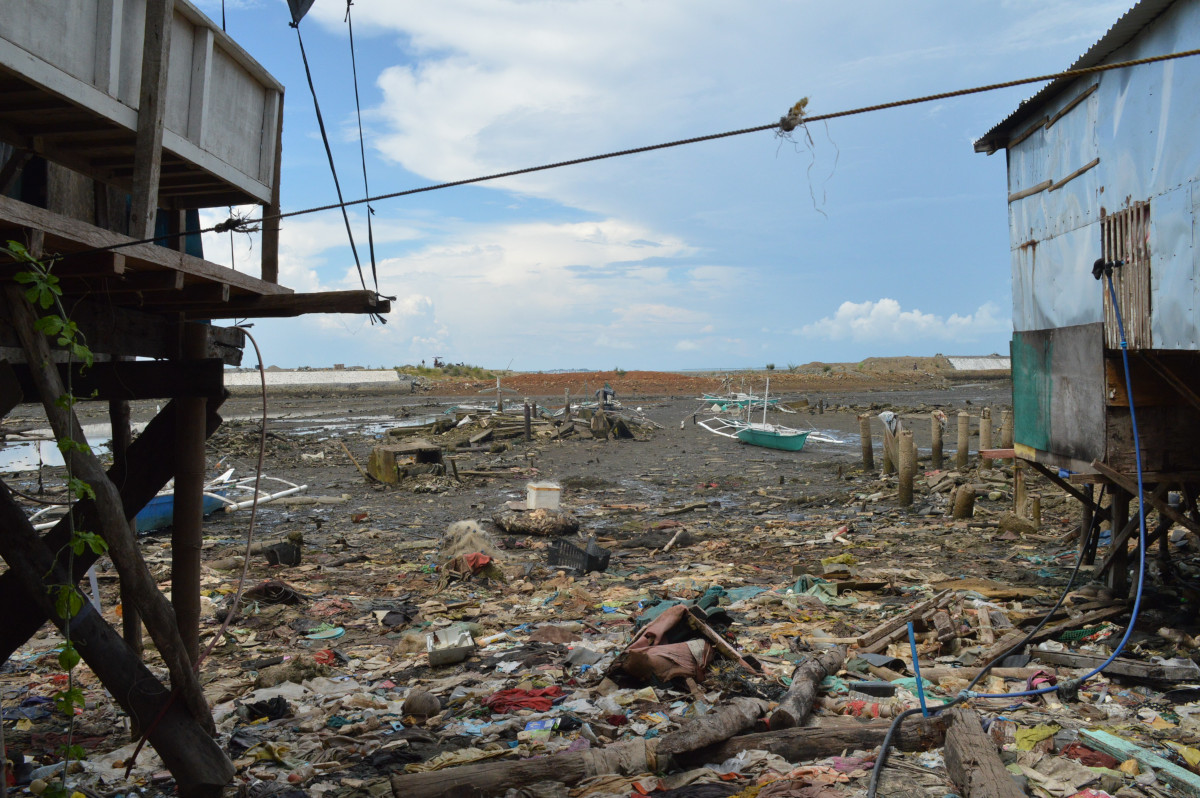
Mrs. Lopos says that full recovery of Ubay town and the other towns where tropical cyclone Odette made landfall in 2021 cannot fully take place unless the issues of jobs and poverty are addressed. “There is the challenge of everyday living, the daily effort to stand up and find a job so that the family can have food on the table,” she adds.

Delayed funding and completion of structures
One area of contention about the implementation of disaster risk management (DRM) projects involves the delay in the release of funds intended to quickly respond to urgent needs, like flood prevention structures and bridges, immediate relocation or evacuation, and contractors’ schedule of completion that are unchecked or extended, say some residents of Ubay and Maribojoc.
Based on the experience of local leaders, it usually takes a long time to release DRM funds, even for projects intended to rebuild or restore damaged structures.
Margarita Bagase, 74, resident of Busao, Maribojoc, cited a billboard that marks a P42-million construction project to maintain flood mitigation structures and drainage system along a flood prone river leading to Tubig Dako to the Inambacan cave and spring. The project started June 14, 2022 and was scheduled for completion on January 6, 2023.
“We have observed that there must have been at least four contractors for the construction of this project, but typhoons and floods have come and gone since 2014, and we’ve waited for a long time for its completion,” Bagase said, indicating that it is an old initiative that remains pending. It falls under the management of DPWH Bohol First District Engineering Office.
In Ubay town, ten-wheeler trucks carry limestone soil and gravel for contract projects to construct what a billboard says would be the “improvement of access road leading to the seaport”.
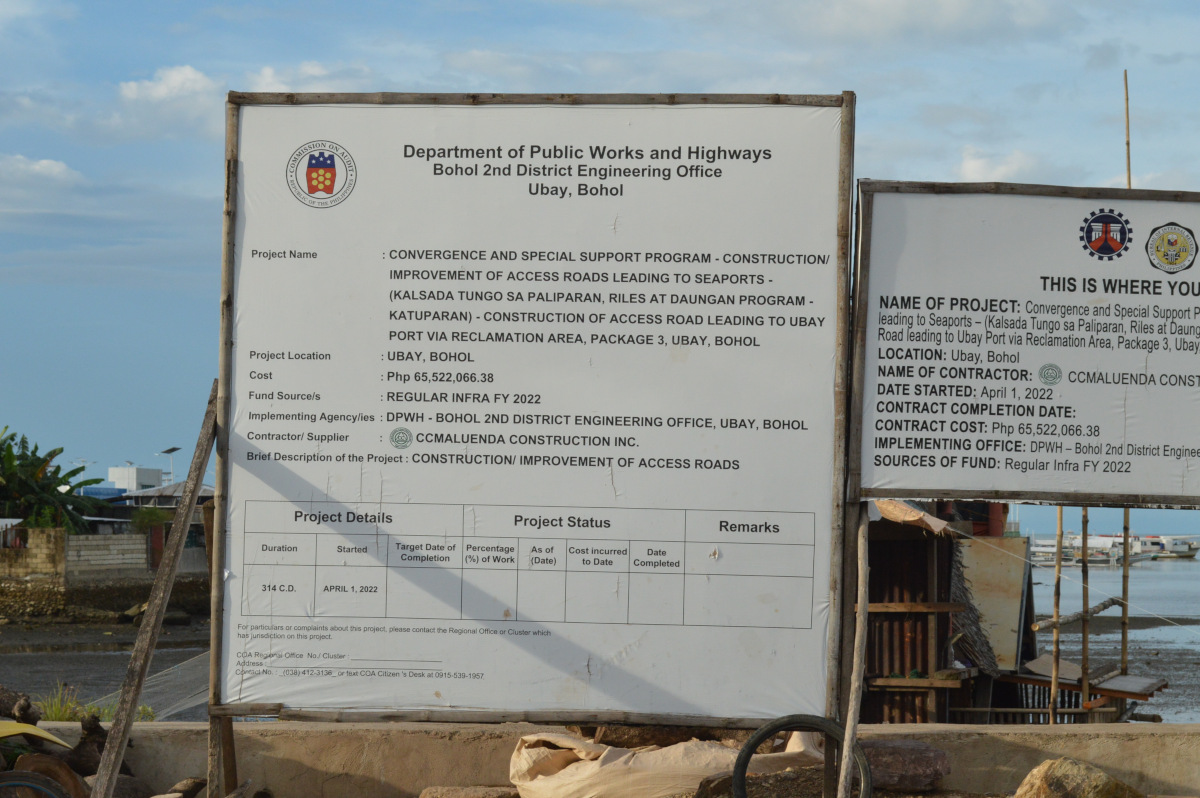
The two projects, worth a total of over 100 million pesos, are intended to be part of a diversion road for big trucks going to the port, to decongest the traffic in the town, but it also serves as barrier to prevent seawater from flooding Fatima village in Ubay, which was levelled by typhoon Odette in 2021.
The other part of the diversion road/barrier which was completed before the latest typhoon struck, served to block the water from hitting Tapon village directly in 2021, thus preventing residents there from being swept to the sea.
Pinky Jumamil San Pedro, a grandmother and former school cashier who survived the storm surge in 2021, said it would have been a great help to her village if the barrier was completed before typhoon Odette struck. “If the Poblacion barrier had been completed at the back of our house, it would have prevented the sweeping away of our place,” she said.
The first project started on March 28, 2022, and the second one started April 1, 2022, with no completion dates on the billboards.
Engr. Pelarada, Construction Section Chief of DPWH Ubay, said there was an original completion date, but his office allowed an extension since it was always raining. The original completion date was last May 24, 2023. As of the end of the year, the project was still uncompleted.
“If the contractor has negative slippage, (unreasonable delay) the contractor will be penalized. This will be deducted from his final billing,” he pointed out. Another source of delay, he said, is that release of funds for the projects is done on a staggered basis, hence it takes a long time to complete projects.
Asked to comment on the delays in the release of emergency funds, Bohol DRRM Officer Dr. Anthony Damalerio admitted that delays are also caused by many procedural requirements. “Before the downloading of funds, you have to have a declaration of a state of calamity, and others like the signatures of affected villagers. Even in giving out food packs, we need to get signatures. There is too much bureaucracy. We have to change the mindset of government when it comes to emergency.”
A World Bank technical working group report (2020) says that “while the NDRRM Fund is a key government fund (budget line) to respond to disaster, it does not achieve its potential due to delays in releasing funds and a lack of flexibility in the use of the fund.” WB Document .
“Beyond delays in approvals, there are other signs that it is not working as intended. For example, the NDRRM Fund is expected to also finance pre-disaster activities and provide support to LGUs, but has barely done so,” the report says. “Complex approval processes often delay the release of funding even from pre-arranged mechanisms, leading to delays in disaster response.”
It says the approval of funding requests from the NDRRM Fund takes a long process that includes evaluation from various offices, including the Office of the President, that could take a year or more before funds are released as against the prescribed timeline for national government agencies of 15 to 30 days.
Partnership in resettlement program
It is not all bad news, though, as illustrated by the experience of communities in Talibon, another town battered by Odette.
The case of Talibon illustrates how a town can go into a partnership with non-government agencies, such as Philippine Red Cross (PRC) and the United Nations Development Programme (UNDP) and other government agencies, to resettle disaster-stricken communities from areas which have been declared no-build zones. Talibon town opted to have a relocation program, Damalerio said.
Along with the President’s Socio Civil Projects Fund (SCPF) and the National Housing Authority (NHA), the LGU pooled its resources successfully to facilitate the acquisition of a 7-hectare property in San Carlos village, some six kms from the town center, for its relocation site.
The PRC, through its Full Shelter Assistance program, funded 70 housing units measuring 21.54 square meters each, complete with latrine provision. The houses were funded by the PRC from the P25.9 million it gave to Bohol to build full and transition shelters for the storm victims.
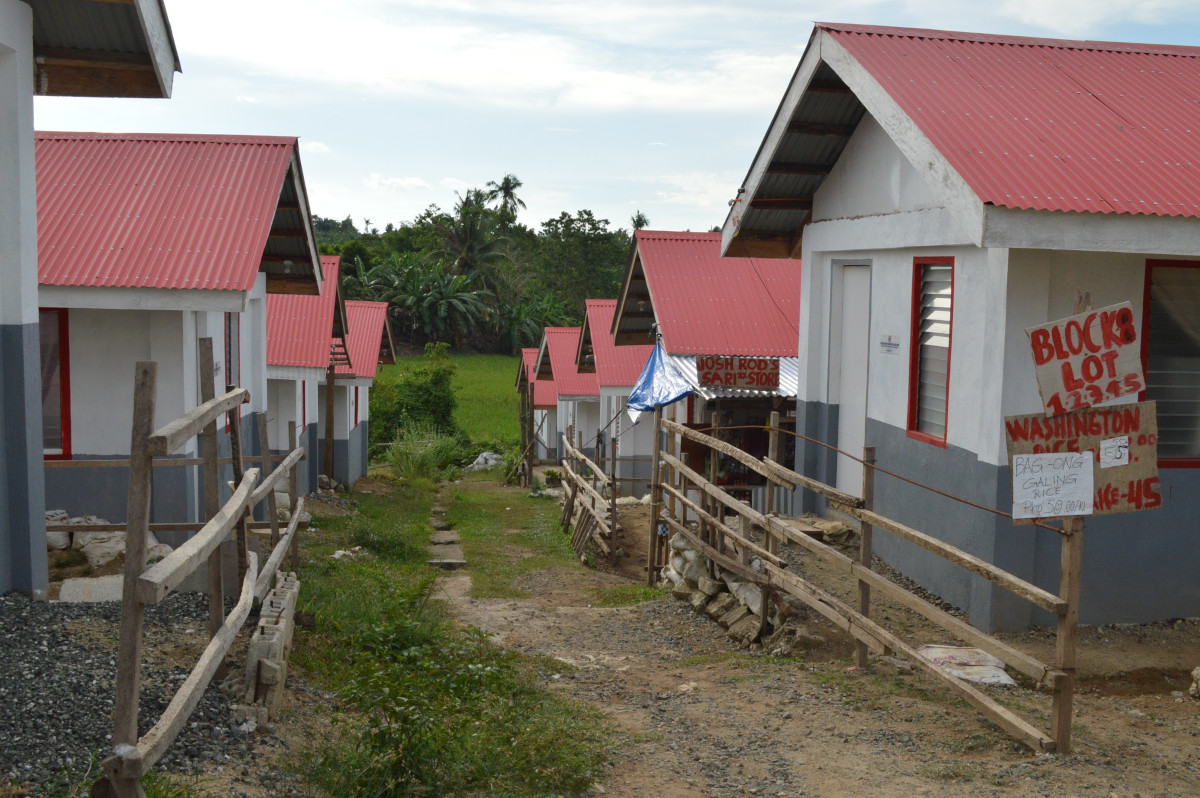
At the PRC Housing site in San Carlos village, now branded as CPG Ville, is a neat row of red-roofed white bungalows.
The 70 housing units at the Red Cross relocation site are for the survivors from the villages of Pasil and Eskinita in Talibon town. They were constructed in record time from October, 2022 to May, 2023, with the beneficiary families also providing labor counterpart for the construction of the units.
But many of the families still go back to their old place mainly for work or to go to the sea, their main source of livelihood. Others work as bakers, market vendors or engage in enterprise activities for a living.
At the time of the author’s visit last September, only 21 were living regularly in the 70 housing units since the rest are still waiting for power and water services to be installed. Their main livelihood activities are still based in Pasil and Eskinita.
Dorlen Tomada of Pasil, bakes cakes, but due to the absence of power in the relocation site, she finds it hard to continue her main source of income. “I am thankful for the house and lot that I would not have afforded to buy, but I will be happier if the houses are provided power and water services, so that I can continue my small business enterprise of baking cakes and making snacks.”
Jessica Patin has a sari-sari store selling bottled mineral water and other household items in the relocation area, but says there’s hardly any buyer, so she just uses them for her own consumption.
While waiting for the power and water services, she fetches water at a well nearby, and uses solar energy for light. “We can live with these inconveniences, including mosquitoes. That’s all right, as long as we have peace of mind. We don’t have to worry about strong waves and winds here, as we did in our old place,” the resident says.
Ranillo Avergonzalo, the young head of San Carlos village, says: “We are thankful for the new housing project that brought 70 new residents, which means more economic activities and more visitors to our place.”
He disclosed that 164 households in his village were granted P15,000 each by the Philippine Red Cross for a livelihood activity of their choice. Some chose pig-raising, while others preferred gardening and setting up sari-sari stores.
Also in the same relocation site as the Red Cross, the UNDP is currently building what an unnamed representative called 20 concrete climate-resilient housing units positioned in two rows, with 10 units in each row, and each unit costing P500,000. The project began in 2022 and is still on-going.
“Families living in danger zones like the island communities experienced most of the impacts of (climate) disasters. We have experienced extreme weather events in the Philippines repetitively and while we always find ways to rebuild and recover, we want to see more resilient communities that can avoid similar damages,” Floradema Eleazar, UNDP Philippine Climate Action Team Leader, told media during the ground-breaking ceremony for the housing units in 2022.
The LGU in Talibon is to provide a water pump to make the water system operational and distribute water pipes up to shelter units. Through the NHA, it has promised to build 30 more units in the relocation site.
Donors for relocation site housing units, like the Philippine Red Cross and UNDP, want to make sure that the LGU owns land for resettlement purposes so that the project will not face ownership issues later or in the middle of the project, according to Talibon housing officer Engr. Ramil Artiaga.
“In the case of Talibon, the LGU still owns the land, and the beneficiary owns the house. This is to prevent beneficiaries from selling the land,” he said.
Prioritize climate emergency response
Climate action supporters and DRRM practitioners, like Damalerio and Leonardo Samar of Bohol’s Weather Surveillance Station, have expressed the need to prioritize response to climate change emergency in the province given its susceptibility to severe weather conditions, including the onset of rising tides in many of its 70 component islands.
“Typhoons are getting stronger, and we are the most disaster vulnerable country in the world. Six to seven years from now, another major cyclone could hit us in Bohol,” Damalerio warns. “Preparedness is the name of the game, which means we have to do training, procure equipment, we have personnel. We have to be single-minded about disaster preparedness.”
Samar says that the frequency of occurrence of typhoons dropped in 2023, adding, “We are now in the strong El Nino condition. In our monthly rainfall forecast these days, we are still in normal condition, but starting January to May, 2024, we will be getting below normal rainfall. There will be a dry condition end of February, then dry spell end of March, and at end of May, Bohol will experience a drought condition.”
“There’s a 5% budget allocation for local DRRM, there’s no reason local government units can’t prioritize climate emergency response. Why not utilize this, spend it in much needed education, training and preventive measures, rather than put it in a trust fund which could further delay its release,” Damalerio stated. “There are some leaders who are biased with infrastructure projects, they prefer schools, bridges, water pumping stations, etc. because that is what people see,” the provincial DRRM officer noted.
“One better way is to educate the children to have an impact on the next set of leaders, so that when it’s their turn to lead, we can say we did our part. It is going to be everybody’s business — the media, the children, senior citizens, and civil society when it comes to disaster response and climate emergency preparedness.” It is not just the concern of government disaster management offices, he stressed.
He called for the easing of procedural and bureaucratic requirements when it comes to emergency, and the release of DRRM funds.
“It’s going to be a collective effort as far as climate disaster and emergency preparedness is concerned,” Damalerio said. “We have the same earth. We have to work together.”
For this part, Samar said: “It is important that there is a global effort to minimize carbon emissions. We in the Philippines are severely affected by climate change, but our contribution to global warming is minimal, compared to the big countries, like China, USA and Europe. They are big contributors to greenhouse gases,” Samar observed.
“They say the big countries will pay for their damage, but the environmental devastation and loss of lives cannot be compensated enough,” he stated.
Part 1: Climate Disaster Survivors in Bohol Struggle to Recover as Rehabilitation Plan Remains Unclear
This story was produced with the support of Internews’ Earth Journalism Network.
Read other interesting stories:
Click thumbnails to read related articles.
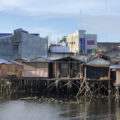
Waiting for another disaster in Ubay?

Typhoon Odette Survivors in Bohol Celebrate New Lease on Life
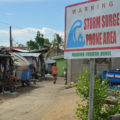
Climate Disaster Survivors in Bohol Struggle to Recover as Rehabilitation Plan Remains Unclear
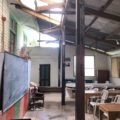
Resilience eases Bohol schools’ bumpy road to recovery
- Share on Facebook
- Share on Twitter
- Share on Reddit
- Save to your Google bookmark
- Save to Pocket
By providing an email address. I agree to the Terms of Use and acknowledge that I have read the Privacy Policy .
Bohol still without electricity; many areas still flooded – Robredo
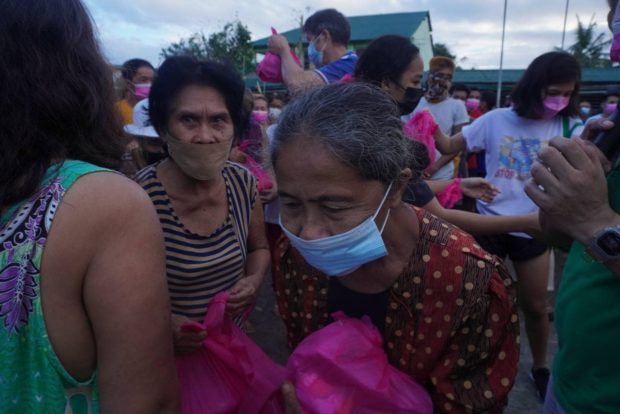
Bohol residents affected by Typhoon Odette get their relief package from the Office of the Vice President on Friday, December 17, 2021. Vice President Leni Robredo flew to the province once cleared to visit the area to personally check the situation on the ground and extend aid. Photo from OVP
MANILA, Philippines — Hours after Typhoon Odette crossed Visayas, the entire province of Bohol was still without electricity as only solar-powered lights were operating Friday night, Vice President Leni Robredo said.
Robredo, who earlier flew to Bohol to personally check the situation on the ground, said a lot of roads remain impassable due to scattered debris brought by Odette’s strong winds while many areas, especially the northern and eastern portions of the province, are still flooded.
In fact, the Vice President said they were not cleared to visit an evacuation area in Loay town because roads connecting the towns are still in deep floodwaters.
“Flew to Bohol the moment we were cleared to fly there post-Odette. Updates have been hard to come by over the past 24 hours, kaya hindi rin tayo mapakali (that’s why we were restless). So we went to assess the situation and bring help,” Robredo said in a Facebook post.
“The whole province has no electricity at solar lights lang ang gumagana. Many roads are still unpassable, and many areas in the North and East of the province are still flooded. Hindi na nga kami nakatuloy sa isang evacuation center sa Loay dahil baha pa rin,” she added.
(The whole province has no electricity and solar lights are only functioning. Many roads are still impassable, and many areas in the North and East of the province are still flooded. We were not allowed to go to one evacuation center in Loay because it is still flooded.)
Robredo said Bohol Gov. Arthur Yap and other officials like Vice Governor Rene Relampagos and Tagbilaran Mayor Baba Yap have been leading clearing operations on the ground.
“Gov. Art Yap has been leading road-clearing ops with their Tarsier 117 team. Vice Gov. Rene Relampagos and Mayor Baba Yap are also on the ground, along with other local officials,” she said.
“Sa ngayon, inaalam pa ang extent ng damage (As of now we’re understanding the extent of the damage), as well as the death toll, because communication lines are mostly down. We’ll be posting more photos of the damage as documented by the ground team,” she added.

Vice President Leni Robredo visits Typhoon Odetted-battered Bohol on Friday, December 17, 2021. Photo from OVP
Earlier, Robredo announced they are converting their space for campaign volunteers along Katipunan Avenue, Quezon City, into a relief operations center where concerned citizens can drop their donations.
She said the people can donate the following items:
- hygiene items like shampoo, soap, toothbrush, toothpaste, at sanitary napkins
- face masks and alcohol
- bottled water
- rice grains
- ready to eat food items like easy to open canned goods, instant noodles, biscuits, powdered drinks like coffee, and cereal drinks
As of Friday evening, the Philippine Atmospheric, Geophysical and Astronomical Services Administration (Pagasa) said that Odette slightly weakened as it started moving over to the West Philippine Sea.
Odette was packing maximum sustained winds of 150 kilometers per hour (kph) and gustiness of 205 kph. It is still moving west-northwestward at 30 kph, according to the state weather service.
RELATED STORIES
Subscribe to our daily newsletter
Signal No. 3 up in northern Palawan; Typhoon Odette may exit PH on Saturday Typhoon Odette makes 9th landfall in Roxas municipality in Palawan – Pagasa
Disclaimer: Comments do not represent the views of INQUIRER.net. We reserve the right to exclude comments which are inconsistent with our editorial standards. FULL DISCLAIMER
© copyright 1997-2024 inquirer.net | all rights reserved.
We use cookies to ensure you get the best experience on our website. By continuing, you are agreeing to our use of cookies. To find out more, please click this link.
- Agri-Commodities
- Asean Economic Community
- Banking & Finance
- Business Sense
- Entrepreneur
- Executive Views
- Export Unlimited
- Harvard Management Update
- Monday Morning
- Mutual Funds
- Stock Market Outlook
- The Integrity Initiative
- Editorial cartoon
- Design&Space
- Digital Life
- 360° Review
- Biodiversity
- Climate Change
- Environment
- Envoys & Expats
- Health & Fitness
- Mission: PHL
- Perspective
- Today in History
- Tony&Nick
- When I Was 25
- Wine & Dine
- Live & In Quarantine
- Bulletin Board
- Public Service
- The Broader Look
Today’s front page, Wednesday, May 29, 2024

Please! No U-turn on coal moratorium
- Ruben M. Cruz Jr. | Online Editor
- May 29, 2024
- 4 minute read

The Department of Energy implemented a moratorium on new coal power plants in 2020. The policy took a long time coming but it was the right decision.
Coal is the most carbon-intensive fossil fuel and accounts for 43 percent of global greenhouse gas emissions, which countries that ratified the Paris Agreement, including the Philippines, vowed to reduce by 70 percent by 2030.
I am glad Energy secretary Raphael Lotilla said the Marcos administration will continue to implement the coal ban signed by previous energy secretary Alfonso Cusi in 2020.
The Philippine government had committed to significantly increase its renewable energy capacity by 2030, aiming to install 15,400 MW from RE to account for half of the country’s power demand. This was the target set forth in the Philippines’s National Renewable Energy Program, under the RE law of 2008.
The coal moratorium should not be reversed despite certain clamors to do so.
Recently, former Energy Secretary Jericho Petilla urged the national government to lift the moratorium on coal-fired power plants, citing a need to build more capacity to meet the rising demand as the country struggles with power supply issues.
Senate President Francis Escudero also said he believes the moratorium on new coal-fired power plants should be lifted during his interview with Karen Davila on ANC’s Headstart.
Escudero said RE is unreliable and more costly compared to coal-fired power.
This is an about-face position from when Escudero ran as Sen. Grace Poe’s vice president in 2016, when he went on record as being all-out for renewable energy development.
“If we are serious about reducing carbon emissions and making good on our international commitments, then we should push for the development of renewable energy sources,” Escudero said in a statement then. ( https://legacy.senate.gov.ph/press_release/2015/1201_escudero1.asp )
Escudero, who previously headed the Senate Committee on Environment and Natural Resources, said renewable energy sources are not only sustainable but cheaper than fossil fuel because the sources, such as wind and sunshine, are virtually free.
“It’s pitiful. We have the resources that we need right here that can solve our problem of insufficient, unreliable and expensive power supply. But we’re not developing them, so we have to ask ourselves: why isn’t there enough interest in this business?” Escudero said.
Escudero said the government should study the possibility of giving tax incentives to companies that would go into renewable energy development, especially in areas with power problems like Mindanao.
He also proposed conducting a nationwide survey to identify which provinces could be tapped for various renewable energy projects.
“It is time to harness the resources that we have to produce the energy that we need. Otherwise, we will forever be at the mercy of the big power firms who control the supply of power, and hence, the amount that we pay for electricity,” he said, noting Philippine households pay the fifth highest power rate in the world, according to the International Energy Agency.
I do not know what prompted the Senate President to have a change of heart.
He noted the reliability of coal as a baseload energy source in his Headstart interview but geothermal energy, which is considered renewable is also a baseload energy source, indeed one of the main sources powering the Bicol region where he is from. The Philippines is the second largest geothermal energy power producer in the world and Bicol accounts for most of geothermal.
Besides, our coal-fired power plants have proven to be prone to outages, they are not really that reliable. The grid’s dependence on coal energy has actually led to rotating blackouts for many years, especially during the summer season. During this brutal summer the local grid was again vulnerable to shortages in the power supply, with large coal power plants conking out.
Last May 14, the Energy Regulatory Commission tagged five power generating companies that breached the unplanned outage allowance—all of them were coal-fired power plants.
ERC director for market operations service Sharon Montaner said during a Senate hearing the agency would issue an order to the coal plants in the Luzon grid to explain why they exceeded the allowable unplanned outage days.
So, again, coal is really not as reliable as its proponents say—nor is it really cheaper.
Mylene Capongcol, director of the DOE Renewable Energy Management Bureau (REMB) said RE can definitely compete with coal.
“In the renewable space, you only pay for the cost of developing, and naturally, the supply is available for use. This is why the DOE is looking for strategies to buy down the cost of RE in the country, not just in the investment side but also for the consumers,” she said.
Indeed, wind, solar, hydro, geothermal, biomass and other renewable energy sources can provide a competitive advantage over coal as they are readily available in our country and their costs remain stable and under control, not subject to the price volatilities of fossil fuels.
But there is a more compelling reason for a sense of urgency in exploring more renewable energy projects. We have seen how vulnerable the Philippines is to extreme weather events caused by climate change. We belong among the top nations who are most in danger of facing more frequent and more intense storms as climate change worsens.
Renewable energy can significantly slow climate change and save many millions of lives. Wind, solar, hydro, geothermal, biomass and other RE power plants can displace hundreds of thousands of tons of carbon emissions in the country while generating a significant number of jobs, boosting economic activity in the host provinces where they operate.
The Institute for Energy Economics and Financial Analysis previously projected that the Energy department’s moratorium on new coal-fired projects could bring in P1.45 trillion or $30 billion worth of investments in renewable energy by 2030.
The environmental and economic benefits of RE extend well beyond our GDP to improve the health and wellbeing of our citizens.
More coal consumption can only lead to more greenhouse gas emissions and it is countries like the Philippines and our people who would have to suffer the subsequent climate change disasters.
The views expressed by this writer belong solely to him and not necessarily shared by the publication.

Editorial Cartoon May 29, 2024
- BusinessMirror Editorial
Bohol investments on the rise
- Zoilo ‘Bingo’ Dejaresco III

Rising coffee consumption: A path to reclaiming coffee export powerhouse status

Luzon Economic Corridor
- Mark Villar

Positive leadership during change
- Carlo Atienza
China chipmakers catching up fast in AI, SenseTime’s Xu says
- Jane Zhang & David Ingles / Bloomberg
- May 28, 2024
Wall Street moves to fastest settlement of trades in a century
- Greg Ritchie / Bloomberg
Too small to police, too big to ignore: Telegram is the app dividing Europe
- Alberto Nardelli, Daniel Hornak & Jeff Stone / Bloomberg
South Korea is gearing up to become space powerhouse
- Shinhye Kang & Bruce Einhorn / Bloomberg

Editorial Cartoon May 28, 2024
A bold step towards faster, more reliable internet connection, us interest rates are not coming down.
- John Mangun
Digital services tax: An Asean comparison
- Atty. Jomel N. Manaig
Are you really saving money in bargain hunting?
- Rosemarie Gases
TSMC’s foreign investments are good for Taiwan, official says
- Tom Giles, Debby Wu & Jane Lanhee Lee / Bloomberg
- May 27, 2024
China urges South Korea to maintain stable, smooth supply chains
- Soo-Hyang Choi & Yoshiaki Nohara
Israeli military proceeds into Rafah despite UN court ruling
- Ethan Bronner / Bloomberg
Modi’s rivals unite in bid to unseat him in Delhi
- Swati Gupta

Editorial Cartoon May 27, 2024
Input your search keywords and press Enter.

COMMENTS
In an editorial published in The Bohol Chronicle, a local English language daily, for example, coal-based electricity generation was directly linked with climate consequences (The Bohol Chronicle, 25 March 2018). Renewable energy Bohol was also a vital aspect of the Roman Catholic Church's own tactic in the dissent (Respondent 3).
BOHOL, Philippines - The local government of Bohol passed an ordinance against the establishment of coal power plants in the province, as a response to the people's demand for a coal-free ...
The Decade in Review: Expanding Coal, Lagging Renewables, and Rising Fossil Gas (2020) E & Chenoweth et al. Why Civil Resistance Works: The Strategic Logic of Nonviolent Conflict (2011) M. Conde Bohol's no-coal ordinance; an important victory (2018) J.S. Cornelio et al. Young People and Golden Rule Catholicism in the Philippines: The case of ...
The local government of Bohol passed an ordinance against the establishment of coal power plants in the province, as a response to the people's demand for a coal-free Bohol. Provincial Ordinance 2018-005, passed on April 6 by the Sangguniang Panlalawigan (SP), prohibits the building of any coal power plant in Bohol.
Bohol, however, is not alone in using coal energy but most of the country. "For September 2022 alone, the generation mix of Boheco I is 87.57 coming from coal-generated power plants." The committee report signed by Damalerio as chair and BM Dr. Romulo Cepedoza and BM Atty. Tomas D. Abapo, Jr, vice-chair and member, respectively, dealt with ...
Campaign vs. coal-fired power plant in Bohol mounts. In 2017, over 200 families in a community located near fuel and coal-fired power plants in Limay, Bataan were reportedly told to leave their homes after they complained of health problems, including skin and respiratory diseases. Various environmental groups also called on the Department of ...
The provincial government of Bohol passed an ordinance in 2018 against the establishment of coal power plants. (READ: Bohol's no-coal ordinance 'an important victory' - advocate )
It also asserted that studies showed that coal, besides being expensive, has fatal impact on Bohol's environment. "Coal kills the environment and people. A recent study commissioned by ...
1. THAT COAL IS DIRTY AND DEADLY. Coal damages both people and planet. Existing and proposed coal power plants in the Philippines can cause up to 2,410 premature deaths annually according to a 2015 Harvard study. Coal burning emits substances which contribute to smog, haze, lung disease, and respiratory illnesses; as well as neurological and ...
Legarda lauds Bohol for "no-to-coal" policy. First District Rep. Edgar Chatto said that Deputy Speaker Loren Legarda, a known environment advocate, commended Bohol for its "no-to-coal" policy citing the province as a model for the drive against coal-fired power plants in the country. According to Chatto, Legarda made the statement ...
No to Coal in Bohol. March 5, 2018 /. We, the Bohol Clean Energy Advocates, call on the Sanggunian Panlungsod of Tagbilaran City and the Sangguniang Panlalawigan of Bohol to recognize the negative impacts of coal-based power generation and the need to shift to renewable energy sources by passing resolutions to support calls for "a moratorium ...
We, the Bohol Clean Energy Advocates, call on the Sanggunian Panlungsod of Tagbilaran City and the Sangguniang Panlalawigan of Bohol to recognize the negative impacts of coal-based power generation and the need to shift to renewable energy sources by passing resolutions to support calls for "a moratorium on the establishment of carbon-intensive and fossil-based technologies"; […]
Bacareza also lauded the decision of the Provincial Government of Bohol not to accept coal plants "because the future of power lies in renewable energy and Bohol has valuable renewable energy resources that remain untapped." ADVERTISEMENT . A no-coal ordinance was passed by the Provincial Government of Bohol on April 6, 2018, under ...
TAGBILARAN CITY — Bohol officials are hoping that a new ordinance declaring the province as an environment-friendly locality will pave the way for more investments in clean energy. According to ...
Bohol now needs some 80-90 MW to power its electricity requirement in peak hours, according to distribution utilities (DUs). It has three hydro electric plants located in Loboct town (1.2MW), Sevilla town (2-3MW) and the Hanopol, Balilihan town (4-5MW). It also relies much on the standby diesel power barge (25MW) moored in Tapal port, Ubay town ...
In Bohol, like many parts of the Philippines, the poor are forced to live in dangerous locations, like next to riverbanks, or along the coast or on steep slopes, says one report. "This is mainly due to rapid urbanization, which led to a large number of unplanned and overcrowded settlements. People live in mountainous areas and near the ...
In February 2018 Bohol Governor Edgar Chatto stated that the competitive bidding process to build the plant had been completed. Opposition. In March 2018 the group Bohol Clean Energy Advocates published a manifesto calling on the government to halt the development of any future coal-fired power plants on Bohol.
Bohol's no-coal ordinance 'an important victory' - advocate. 0 comments. Best. Add a Comment. 163K subscribers in the climate community. /r/climate has gone private as part of the coordinated protest against Reddit's exorbitant new API….
"Flew to Bohol the moment we were cleared to fly there post-Odette. Updates have been hard to come by over the past 24 hours, kaya hindi rin tayo mapakali (that's why we were restless).
Back to petition To: Bohol Energy Development Advisory Group (BEDAG); Officials of the Provincial Government of Bohol; Department of Environment and Natural Resources; Department of Energy No to Coal in Bohol
Campaign vs. coal-fired power plant in Bohol mounts Source: The Bohol Chronicle retrieved on March 5, 2018 01 The campaign against the establishment of an island-based power plant using coal as fuel is gaining traction. 02 Bishop Patrick Daniel Parcon of the Diocese of Talibon and Bishop Albert Uy, Diocese of Tagbilaran, are said to 03 oppose the plan to establish of coal-fueled power plants ...
No U-turn on coal moratorium. The Department of Energy implemented a moratorium on new coal power plants in 2020. The policy took a long time coming but it was the right decision. Coal is the most ...
This article addresses the future of coal in the European coal heartland, i.e. in the area of Germany, Poland and the Czech Republic, which together account for nearly 57% of coal consumption and ...
Write an article review on the text " No to Coal in Bohol" - 38470032. jessacarpentero229 jessacarpentero229 09.04.2021 English Secondary School answered • expert verified Write an article review on the text " No to Coal in Bohol" See answer Advertisement ...
PCG Western Bohol acting station commander Lt. j.g. Romulo Balonga Jr. said that it has applied for consideration of Loboc River and Ubay to President Carlos P. Garcia special areas in Bohol, so these can be exempted from the detention of vessels when PAGASA declares storm signals in the area. ... Even when the weather is clear and no visible ...
In accordance with the programme of closure works and the implementation of ecological spatial rehabilitation in the area of the Slovenian coal mine Trbovlje-Hrastnik (RTH), there is a great opportunity to exploit shallow geothermal energy from water and ground sources. In the RTH area, there is great energy potential in the utilisation of underground water and heat from the earth. In our ...